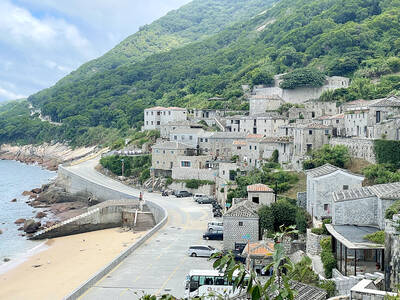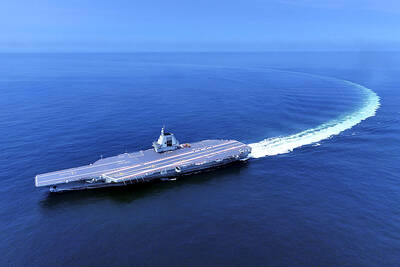As many as 1.1 million workers, or 13 percent of the workforce, put in more than 312 hours above the number of legal working hours last year, the latest statistics showed.
Working many hours of overtime is commonly known as bao gan (爆肝), or “liver busting.”
Taking the legal limit of 84 working hours per two weeks, statistics from the Directorate-General of Budget, Accounting and Statistics (DGBAS) showed that last year, 45.8 percent of workers — 3.89 million — worked more than 42 hours per week.
In a paper published in this month’s issue of the Taiwan Journal of Public Health, Taipei Medical University researcher Tsia Feng-chen (蔡奉真) said working many hours of overtime has a detrimental effect on workers’ health.
Tsai said the situation in Taiwan has not improved over the past 10 years and that “we are lagging behind many countries in terms of protecting employees from being forced to exceed the legal limit on working hours.”
In 2000, the government stipulated that the number of working hours could not exceed 84 hours over a two-week period.
Using a survey published 10 years ago by the International Labor Organization on working conditions in Japan, South Korea, Indonesia and several European and North American nations, Tsai compared Taiwan’s regulations with the working hours in 49 other countries.
She found that most of these countries had set their weekly legal working hours at 35 to 40 hours, with 32 nations having a shorter working week than Taiwan.
Data published by the Council of Labor Affairs showed that Taiwanese employees worked a total of 2,144 hours on average in 2011, which was the second-highest amount, behind only Singapore, but 54 hours more than South Korea and 416 hours more than Japanese workers.
Tsai said that the council should inspect working conditions in Taiwanese companies.
In addition, Tsai urged the council to keep up with international trends in labor rights.
Council of Labor Affairs Minister Pan Shih-wei (潘世偉) said the international trend is heading toward a shorter work week, and Taiwan has much room for improvement regarding working hours.
“To improve the situation, we should strengthen the collective negotiation process between unions and management, as well as inspect labor conditions and other long-term plans to amend the labor laws,” he said, adding that the council is also planning to offer incentive programs for companies to decrease working hours, so that workers can find a balance between their work and their daily living.

The first two F-16V Bock 70 jets purchased from the US are expected to arrive in Taiwan around Double Ten National Day, which is on Oct. 10, a military source said yesterday. Of the 66 F-16V Block 70 jets purchased from the US, the first completed production in March, the source said, adding that since then three jets have been produced per month. Although there were reports of engine defects, the issue has been resolved, they said. After the jets arrive in Taiwan, they must first pass testing by the air force before they would officially become Taiwan’s property, they said. The air force

GLOBAL: Although Matsu has limited capacity for large numbers of domestic tourists, it would be a great high-end destination for international travelers, an official said Lienchiang County’s (Matsu) unique landscape and Cold War history give it great potential to be marketed as a destination for international travelers, Tourism Administration Director General Chen Yu-hsiu (陳玉秀) said at the weekend. Tourism officials traveled to the outlying island for the Matsu Biennial, an art festival that started on Friday to celebrate Matsu’s culture, history and landscape. Travelers to Matsu, which lies about 190km northwest of Taipei, must fly or take the state-run New Taima passenger ship. However, flights are often canceled during fog season from April to June. Chen spoke about her vision to promote Matsu as a tourist attraction in

PAWSITIVE IMPACT: A shop owner said that while he adopted cats to take care of rodents, they have also attracted younger visitors who also buy his dried goods In Taipei’s Dadaocheng (大稻埕), cats lounging in shops along Dihua Street do more than nap amid the scent of dried seafood. Many have become beloved fixtures who double as photography models, attracting visitors and helping boost sales in one of the capital’s most historic quarters. A recent photo contest featuring more than a dozen shop cats drew more than 2,200 submissions, turning everyday cat-spotting into a friendly competition that attracted amateur and professional photographers. “It’s rare to see cats standing, so when it suddenly did, it felt like a lucky cat,” said Sabrina Hsu (徐淳蔚), who won the NT$10,000 top prize in

The Chinese People’s Liberation Army Navy’s (PLAN) third aircraft carrier, the Fujian, would pose a steep challenge to Taiwan’s ability to defend itself against a full-scale invasion, a defense expert said yesterday. Institute of National Defense and Security Research analyst Chieh Chung (揭仲) made the comment hours after the PLAN confirmed the carrier recently passed through the Taiwan Strait to conduct “scientific research tests and training missions” in the South China Sea. China has two carriers in operation — the Liaoning and the Shandong — with the Fujian undergoing sea trials. Although the PLAN needs time to train the Fujian’s air wing and